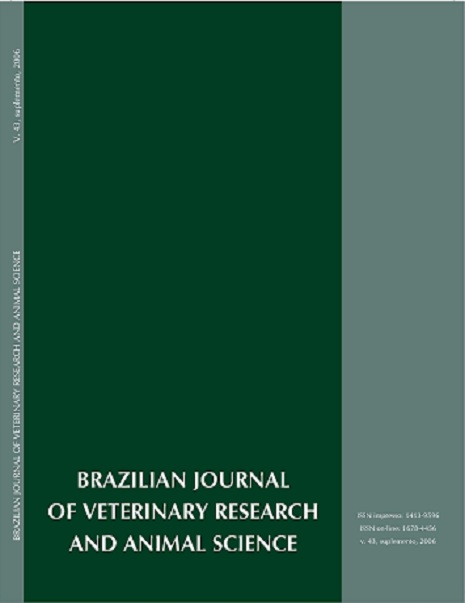Grating visual acuity by sweep visually evoked potentials: methodology standardization for use in dogs
DOI:
https://doi.org/10.11606/issn.1678-4456.bjvras.2006.26540Keywords:
Visual acuity, Electrophysiology, Sweep-VEP, Dogs, Veterinary OphthalmologyAbstract
The aim of this article was to evaluate and to standardize the measurement of grating visual acuity in adult and puppy dogs, without any kind of sedation, by sweep visually evoked potentials (sweep-VEP). Grating visual acuities of 22 dogs, 18 puppies (10 males, 8 females) and 4 adults (2 males, 2 females) were measured. Sweep-VEPs were recorded from two active electrodes placed on the scalp at O1 and O2, a reference electrode at Oz and a ground electrode at Cz. using as stimulus a pattern reversal square wave grating at a temporal rate of 6 Hz with spatial frequency, ranging from 0.2 to 12 cycles per degree (cpd). The dog was positioned on the lap of the investigator with the head gently supported to maintain the eyes in front of the video monitor (Dotronix D788), at a distance of 50 cm. The mean luminance was 159.3 cd/m². The test was performed in a darkened room without mydriatic, sedative or anesthetic drugs. We were able to obtain grating visual acuity measurements in all dogs. The results were comparable to those obtained with other methods. We also followed the development of grating visual acuity during the first 13th weeks of life when the adult level acuity was reached. The sweep-VEP method is a rapid and reliable procedure for the objective quantification of grating visual acuity in puppies and adult dogs, without the need of sedation.Downloads
Download data is not yet available.
Downloads
Published
2006-12-03
Issue
Section
UNDEFINIED
License
The journal content is authorized under the Creative Commons BY-NC-SA license (summary of the license: https://
How to Cite
1.
Moreno-Carmona FM, Costa MF, Ventura DF, Salomão SR, Barrosi PS de M. Grating visual acuity by sweep visually evoked potentials: methodology standardization for use in dogs. Braz. J. Vet. Res. Anim. Sci. [Internet]. 2006 Dec. 3 [cited 2024 Jul. 26];43(supl.):86-92. Available from: https://www.revistas.usp.br/bjvras/article/view/26540





